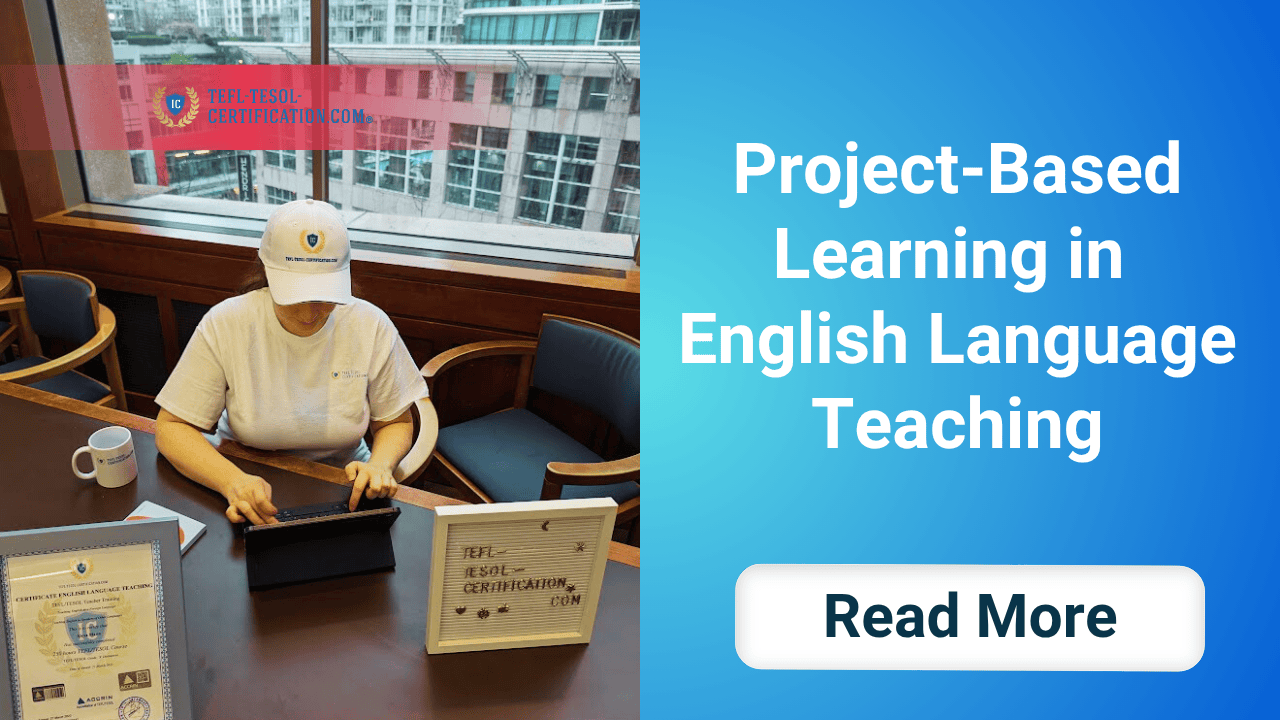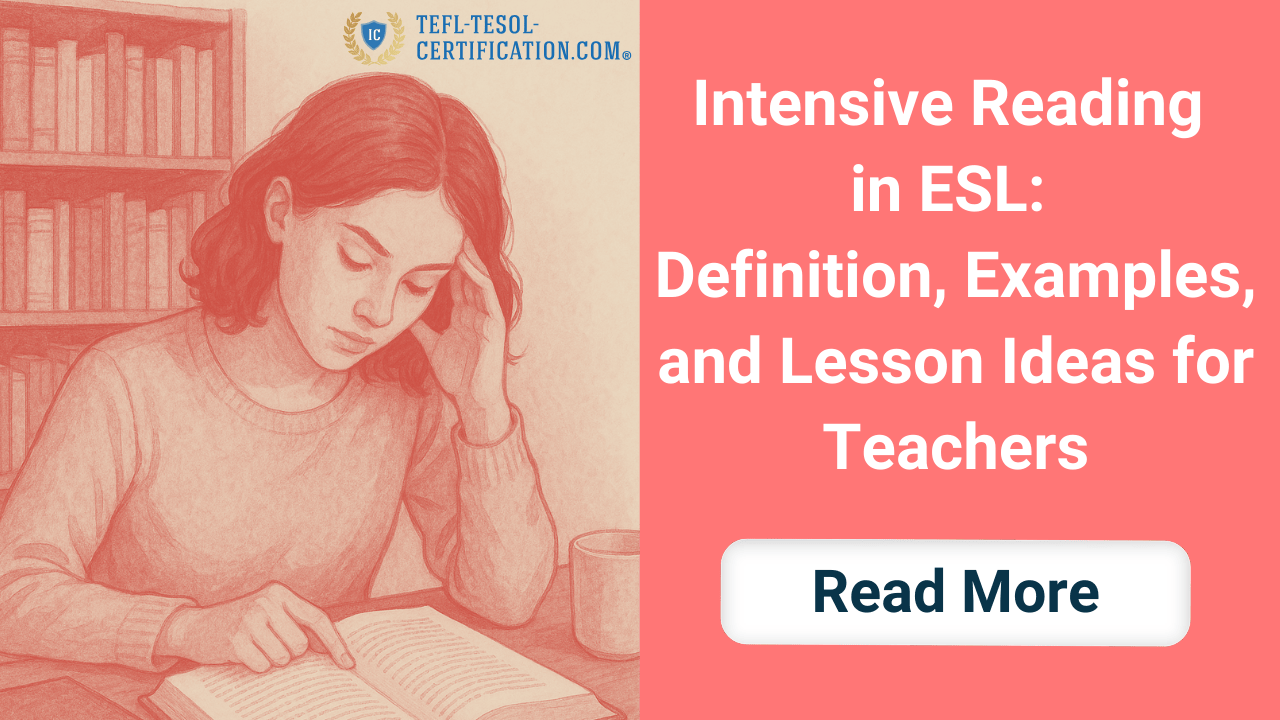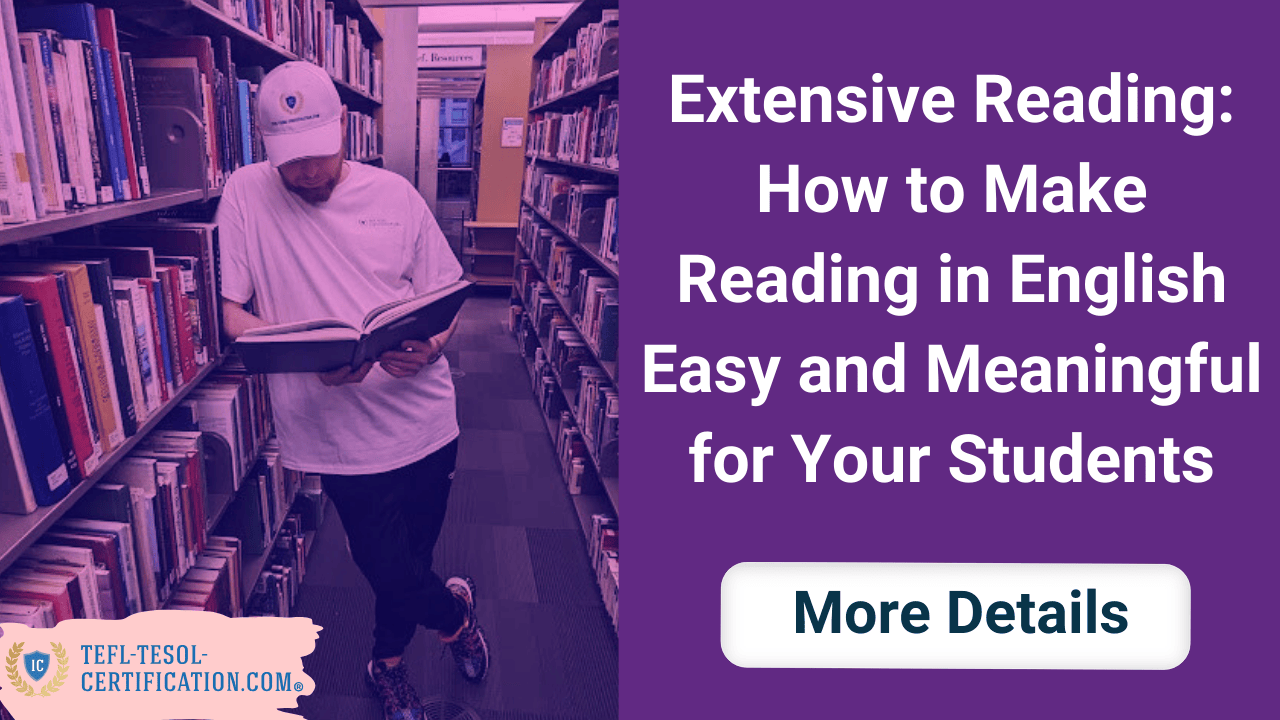💡 Unlock the secrets to doubling your teaching income with our exclusive checklist! 🎯 This checklist is designed for English teachers who want to 📈 attract more students and 🔥 keep them engaged for the long term.
Table of contents
- Implementation Checklist: From Idea to Final Presentation
- Project-Based Learning in ELT: Why PBL Hooks Teens and Adults
- High-Impact Project Ideas for English Lessons
- From “Why” to “What Exactly”: How to Start a Project in ELT
- Stages of Project Work: A Pain-Free Roadmap
- Presenting Projects in English: From Language to Stage—Without Stage Fright
- Assessment & Rubrics: Fair, Transparent, No Surprises
- Tools & TEFL/TESOL: Why Certification Elevates Your PBL
- Checklists, Templates, and Language Banks
- Common PBL Pitfalls—and How to Avoid Them
- Mini Dialogue & A Slice of Real Practice
- Closing the Loop: Finish Strong and Set Up the Next Cycle
- Bottom Line: Start Small—Then Give Learners a Stage
Have you ever caught yourself thinking, “I want less explaining—more doing”? That’s exactly what project-based learning in English delivers: learners create a visible product, use language for real purposes, and finally stop asking “why do I need this?”. In the world of ELT, this approach is called project-based learning (PBL). In a project-based learning ELT context, it works beautifully—even with tight schedules and mixed-ability classes.
Implementation Checklist: From Idea to Final Presentation
I’m York Fern, an ELT teacher-trainer with 12+ years of practice and hundreds of student projects launched. Before we dive deeper, here’s a compact roadmap I rely on for projects—from school groups to corporate classes. Save it, pin it, and tick items off; it keeps both learners and teachers focused.
- Idea & objective: what the project is about and why it matters for these learners (real-life value, curriculum link, soft skills).
- Product: podcast, mini-study, longread, fair booth, video, website, app.
- Success criteria: a simple rubric (language, content, collaboration, design, deadline).
- Plan: timeline, roles, checkpoints, resource list.
- Process: sprints, micro-coaching, peer feedback, agile adjustments.
- Presentation: format, speech, slides, audience Q&A.
- Reflection: wins, gaps, lessons learned—concise and in English.
Project-Based Learning in ELT: Why PBL Hooks Teens and Adults
When I first launched PBL with upper-secondary learners, the surprise wasn’t the final product—it was the engagement curve. Students debated music genres like they were defending theses while sneak-peeking my discourse cards (“however,” “on the one hand,” “to sum up”). PBL activates communication with a goal: not “let’s act out a dialogue,” but “who will interview local musicians and how will we format the transcripts?”. In project-based learning ELT, doing becomes the lesson’s purpose: we use English to negotiate, verify sources, edit a video, and caption frames. Motivation stops being abstract—there’s a product, a deadline, and a team, which naturally builds responsibility and cooperation. PBL also gives space to different learner Proles: extroverts thrive on stage, quieter students shine in research and design. The result is a balanced communicative ecosystem we all want in the classroom.
Practically, PBL treats classic “pain points” of traditional lessons: passive listening, short-term memory, and fear of error. If your team must produce a mini city guide, nobody polishes one sentence for 15 minutes: you draft, get peer feedback, redraft, and move on. Error becomes iteration rather than punishment. That’s the honest, living quality I love in PBL.
High-Impact Project Ideas for English Lessons
I follow the “low risk—visible result” rule. Projects should be tangible—something learners can open, view, and showcase. Strong bets for mixed-ability ELT groups include school podcasts, audio guides, poster-based studies with infographics, video interviews with guests, class blogs/archives, local social campaigns (recycling, bike lanes, library swaps), and debates published as argument sets. To support mixed levels, assign multi-level roles: advanced learners draft longreads, intermediate learners collect interviews and copy-edit, elementary learners design visuals, captions, and run polls—everyone uses English at their level, toward one shared product. 🎯
- Digital: longread, website, social feed, video, podcast.
- Research: mini-study with source table, questionnaires, charts.
- Community: booth/fair, offline campaign, club, charity action.
- Creative: poster exhibit, sketch, museum-style audio track, comic.
From “Why” to “What Exactly”: How to Start a Project in ELT
The secret: start with a driving question, not a topic. “How can we convince the school next door to join our Zero-Waste week?” beats “let’s make posters about ecology.” Then run a quick brainstorm and set a tight “frame”: one-line goal, artifacts list, success criteria, roles. Always discuss constraints—deadlines, budget, equipment, interviews, permissions. That’s not bureaucracy; it’s real-world context translated into the classroom. Finally, show two or three short samples from previous cohorts—not perfect, but achievable. Learners need a growth benchmark, not a museum of masterpieces. 💡
In the first mini-dialogue, “sell” the project’s purpose humanly: “Not just slides. You’ll design a visitor route for our town, and the track will go on the school site.” That’s the spark—your team forms the moment phones go quiet.
And start earning money 💸 by teaching English in your own country, abroad, or online from anywhere on the planet! 🎁 Gifts and bonuses: professional support from your personal coach 🧑🏫 and job placement assistant 💼.
Roles & Agreements
Define responsibility early so the project doesn’t crumble. Offer 3–5 clear roles: source researcher, content editor, design lead, speaker/facilitator, deadline coordinator. Roles rotate per sprint so everyone tries different tasks. Set “rules of play”: how we critique (by rubric, not by taste), how we track progress (quick end-of-lesson check-ins), what we do when someone drops. Drops happen—they’re teachable moments about accountability, not reasons to cancel PBL.
Stages of Project Work: A Pain-Free Roadmap
My stage “skeleton” is stable; content flexes to the group. Below is a field-tested structure that works in schools and language centers, maps to calendars, and—crucially—makes progress visible. Yes, method guides list more steps, but five are plenty to cover both language and product in ELT:
- Launch: problem, goal, product, rubric, plan, roles.
- Research: sources, interviews, data collection, language models.
- Create: drafts, mockups, pitch practice, draft → feedback → revise cycles.
- Present: defense format, Q&A, publish/display.
- Reflect: conclusions, portfolio, next-steps plan.
Mini Timeline (4–5 Weeks)
| Week | Focus | Language Support |
| 1 | Problem, goals, roles | modals for suggestions; agreeing/disagreeing |
| 2 | Research, interviews | question forms; reported speech |
| 3 | Draft the product | signposting; cohesive devices |
| 4 | Rehearsals & visuals | presenting data; pronunciation drills |
| 5 | Defense + reflection | Q&A; self/peer assessment |
Presenting Projects in English: From Language to Stage—Without Stage Fright
Presentations used to scare me most. The antidote: supports and rehearsal. I give a speech template: hook → overview → 3 key findings → what it means → call to action → thanks. For slides, apply the “6–6–6” rule: max six slides, six lines per slide, six words per line. For Q&A, issue “handling questions” cards: “That’s a fair point…”, “Let me clarify…”, “According to our data…”. Rehearse by time: two short runs plus one “dress rehearsal” with a friendly jury.
Atmosphere matters. Set a warm stage—speaker badges, a visible timer, a photo corner for post-presentation shots. Give the audience a simple observer checklist so questions stay constructive. Ask the jury to open Q&A with one easy warm-up question to release tension. 🚀
🚀 More students, 💰 higher income, 🌍 complete freedom! ✅ 112 verified platforms with top rates ⏳ Flexible schedule – work whenever and as much as you want 🎯 Simple requirements – start earning right away 💎 Boost your career and income by teaching students worldwide!
Assessment & Rubrics: Fair, Transparent, No Surprises
No criteria at the start = hurt feelings at the end. Share the rubric upfront as a “quality agreement,” not a judge’s code: language (accuracy & range), content (depth & logic), collaboration (roles & contribution), design (clarity), deadlines (punctuality). Grade the process as well as the product: check-ins, tracker updates, response to feedback. This builds project discipline and honest reflection.
- Self-assessment: a short before/after survey (goals, contribution, growth).
- Peer feedback: two criteria only, each with a “because…” comment.
- Teacher grade: final rubric score + a brief growth note for each student.
Sample Simple Rubric (10 Points)
| Criterion | Description | Points |
| Language | Accuracy, vocabulary, coherence; visible progress from draft to final | 0–3 |
| Content | Data, logic, arguments, and a clear “what it means” | 0–3 |
| Collaboration | Defined roles, contribution, agreements kept | 0–2 |
| Deadlines & Design | Timeliness; readable visuals with minimal text | 0–2 |
Tools & TEFL/TESOL: Why Certification Elevates Your PBL
Early in my career I struggled to systematize projects. The shift came with TEFL and TESOL certification: lesson planning frameworks and practical modules helped me break projects into clear steps and assess the process, not just the “pretty final.” For English teachers, a recognized TEFL TESOL certification builds classroom confidence, standardizes assessment through rubrics, and strengthens employability worldwide. It equips you with the methodological “skeleton” PBL relies on—needs analysis, goal-setting, product choice, criteria design, and reflection. Since earning my certification, I’ve stopped improvising criteria and started sharing them at launch; outcomes became calmer and more consistent.
Checklists, Templates, and Language Banks
Here’s a base kit to keep your first PBL cycle smooth. Keep it simple—the clearer the lists, the fewer questions mid-flight.
- One-page brief: aim, audience, product, format, deadline, roles, sources, milestones.
- Source log: author, date, reference, relevance, 1–2 quotes/paraphrases with language models.
- Language bank (presentation): opening, signposting, commenting on data, handling questions, closing.
- Q&A cards: 10 typical audience questions + response frames.
- Retro template: “Went well / To improve / Action items”.
Ready-to-Use Phrases for Presentations
- Opening: “Good afternoon, thanks for coming. We explored…”
- Overview: “Here is our plan: first…, second…, finally…”
- Data: “According to our survey of 78 students…”
- Q&A: “That’s a fair point. Let me clarify with an example…”
- Closing: “If you’d like to join our initiative, please speak to us after the session…”
Common PBL Pitfalls—and How to Avoid Them
- Jumping straight to slides: without a brief and rubric, presentations look polished but empty.
- Language-only focus: strong grammar, weak data and logic—add sources and a mini-survey.
- Vague roles: “we all did everything” = “nobody owned anything.” Assign 3–5 roles and rotate.
- No rehearsals: the first tough audience question derails the team—schedule timed practice.
- No reflection: project done, lessons lost—close with a short retro and portfolio entries.
Quick remedies: “6–6–6” slides + one idea per slide; rotating roles; at least two sources + one poll; two short rehearsals + one dress rehearsal; a retro survey and portfolio update.
Mini Dialogue & A Slice of Real Practice
— “York, what if I have an accent?” — “We all do. We train clarity and structure; your accent is a map, not a barrier.” — “What if I’m asked something I don’t know?” — “Say, ‘That’s a great question. We haven’t explored it yet, but we plan to…’ Professionals do this at conferences all the time.” On a recent defense, learners answered questions about bike rack placement so convincingly that a local administrator asked to review their calculations for real-world use. That’s the moment PBL exists for: you step forward and say something that matters.
Closing the Loop: Finish Strong and Set Up the Next Cycle
Endings aren’t just applause—they’re documentation. Archive the brief, interim drafts, final product, rubric with scores, and three short reflection paragraphs in English. Build a hallway “gallery”: posters, QR codes to audio, mini videos, class posts. Alumni still send photos—“our neighborhood guide made it onto the tourism site,” “the audio track runs at the school exhibit.” That’s durable motivation—and a reminder that project work is a repeatable teaching method, not a seasonal show.
Bottom Line: Start Small—Then Give Learners a Stage
Pick any curriculum topic, craft a driving question, and choose a one-lesson product—poster, audio invite, short pitch. Add a quarter-page rubric and a single check-in. End with one sentence per team: “what this means for us.” You’re already doing PBL. If you want project-based learning to become your systematic tool, professionalize your practice with a recognized TEFL/TESOL certification. You can start for free today. It validates your methods, aligns you with international ELT standards, and equips you to run projects from launch to presentation with confidence. Good luck—and practice gentle courage; it looks great on an English teacher. 😊
Terms used:
EFL, ESL, TEFL, TESOL

York Fern
An English instructor with 12+ years of experience. I work for an online school and travel the world, teaching students from various countries, leveraging my TEFL/TESOL certification. Seeing the world's oceans, mountains, and cities with my own eyes has given me a profound appreciation for the importance of quality education and international communication.
and start earning by teaching English in your country, abroad, or online from anywhere in the world! Order the course with a 50% discount 💸 and receive as a gift the support of a personal coach 👨🏫 and job placement assistant! 🎁🚀 Hurry, limited spots available! 🏃♂️💨
💡 Unlock the secrets to doubling your teaching income with our exclusive checklist! 🎯 This checklist is designed for English teachers who want to 📈 attract more students and 🔥 keep them engaged for the long term.
🚀 More students, 💰 higher income, 🌍 complete freedom! ✅ 112 verified platforms with top rates ⏳ Flexible schedule – work whenever and as much as you want 🎯 Simple requirements – start earning right away 💎 Boost your career and income by teaching students worldwide!
choose us?




